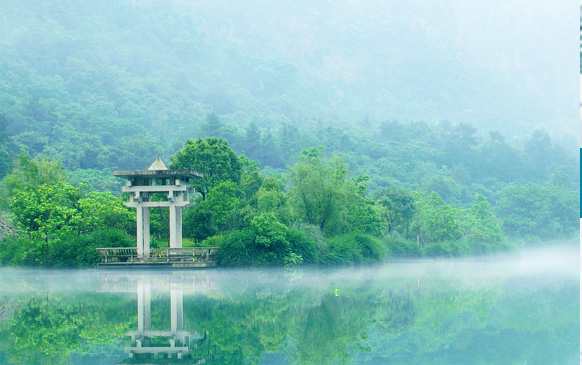
The geographical location of Changyu Dongtian
Changyu Dongtian scenic spot is located in the south wing of the Yangtze River Delta, northeast of Wenling City, the south corner of Taizhou Bay, Zhejiang Province. It is 6km away from Wenling City, 18km away from Taizhou City, 15km away from Taizhou airport, 17km away from Wenling railway station, 9km away from the exit of Ningbo Taizhou Wenzhou Coastal Expressway and 18km away from the exit of Ningbo Taizhou Wenzhou expressway. East of the East China Sea, south of Wenzhou, west of Yiwu, north of Ningbo, road network in all directions.

Dashi first-class highway and county road cross drenching line run through it, which can be connected with provincial highway S226, national highway 104 and provincial highway S226 Ningbo Taizhou Wenzhou expressway, Ningbo Taizhou Wenzhou Coastal Expressway and Taijin expressway are connected.

Taizhou Bay has 15 large and small ports, namely Wenling port, Haimen port, barley island port, Jiantiao port, etc. Changyu Dongtian is 19km away from Wenling port
Changyu dongtian is rich in mineral resources
There are great differences in lithology, genesis and thickness between the mountain area and the plain area in the quaternary system due to the dramatic changes of paleoclimate, the multiple turbulence of sea surface, the rise and fall of neotectonic movement and other factors. The geological structure belongs to the east side of the south section of the second first-order structural complex uplift belt of the Neocathaysian system, and the structural trace is mainly reflected by faults. Mainly non-metallic minerals, known minerals include natural gas, peat, gold, lead zinc, pyrite, pyrophyllite, alunite, kaolin, ceramsite clay, granite and building stone, with 41 producing areas. The KD1 is one of the four mining areas in our city, located in the south of lou'ao village, Xinhe Town. Changyu is an important production area of building veneer (tuff) in Wenling City, with a mining and processing history of nearly one thousand years. There are many kinds of rocks, mainly the mountain body composed of late Jurassic extrusive rocks, mainly volcaniclastic rocks, including fused tuff, tuff, breccia tuff; Secondly, there are various types of granites and a few rhyolites, basalts, andesite, diabase, etc.

The typical subtropical monsoon climate of Changyu Dongtian
It is obviously affected by marine climate. Warm and humid, abundant rain, sufficient sunshine, long frost free period. It has the characteristics of long spring, short autumn, cold winter, hot summer, warm spring, cool autumn and distinct four seasons. There are two rainy seasons in the whole year, may to June is the plum rain period, July to September is the typhoon rain period. The average annual rainfall is 1660mm. The annual average temperature is 17.3 ℃, the hottest July temperature is between 33 ℃ - 35 ℃, and the coldest January temperature is 0 ℃ - 6.7 ℃, which shows the characteristics of "no severe cold in winter and no intense heat in summer". Combined with the "shade effect" of forest vegetation in hilly areas, the temperature in most mountainous areas is 3-4 ° C lower than the average temperature in urban areas, which has a significant summer function and creates a good climate environment for the development of ecological holiday tourism.


